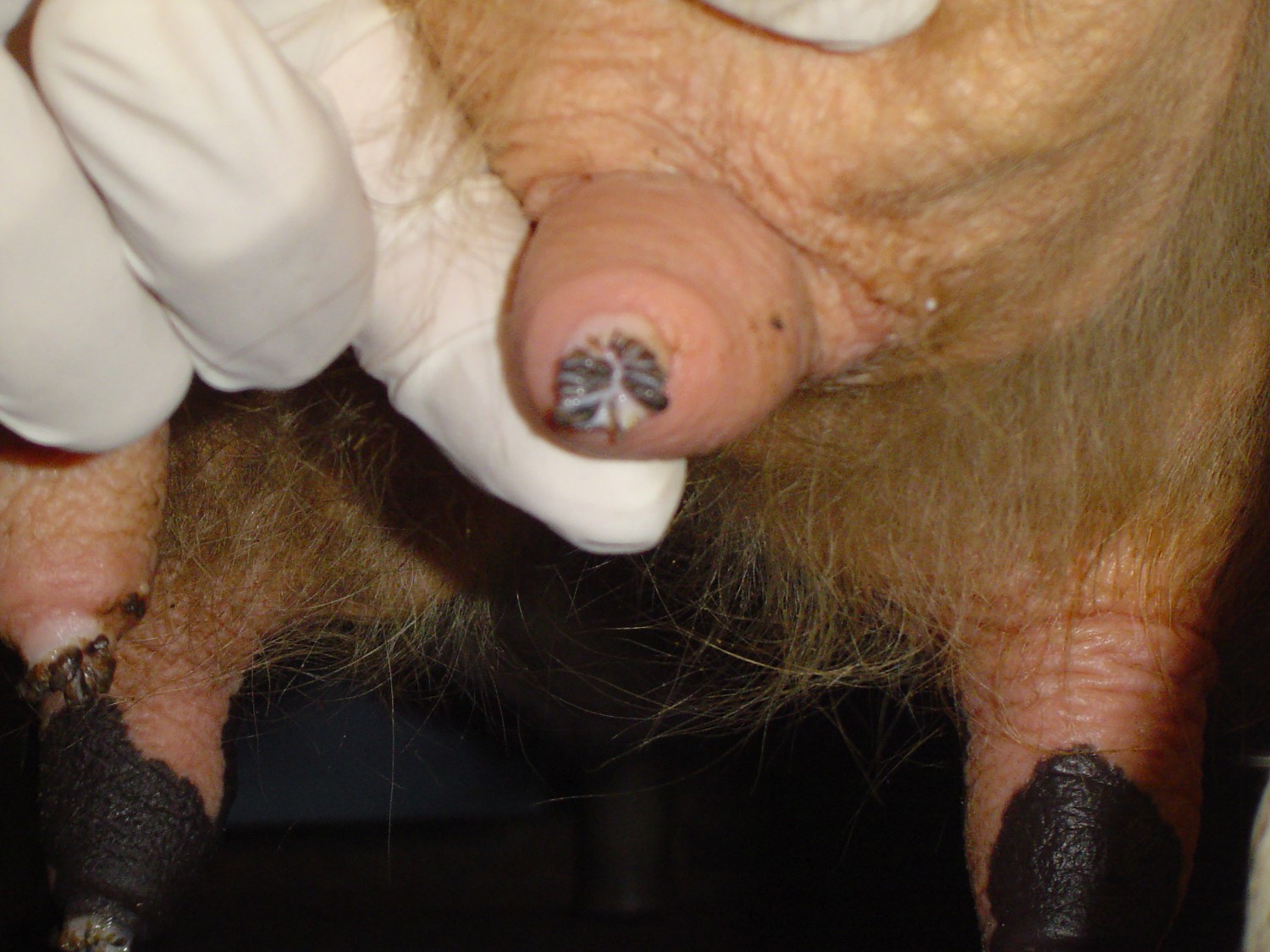- Home
- Knowledge library
- Improving dairy cow defences to environmental mastitis in lactation
Improving dairy cow defences to environmental mastitis in lactation
In addition to minimising the challenge of infection from the environment, improving the cow’s natural defences will play a part in mastitis control.
Back to: Control of dairy cow environmental mastitis in lactation
Defences support systems
To infect the udder and cause mastitis, bacteria need to:
- Physically enter the teat
- Migrate up the teat canal into the udder
- Survive the cow’s immune response (the activities involving white blood cells, which become concentrated in the udder to fight the infection)
The natural defences include:
- Anatomy of the teat
- Physiology of the teat
- Immune system
For more details, see the Control of Contagious Mastitis guide.
Ways of supporting these defences include:
- Anatomical support (good teat-end condition and using internal teat sealants for dry cows)
- Nutritional support (maintaining energy balance, mineral and vitamin levels)
- Immunological support (vaccination)
Did you know?
Severe (rough) teat-end hyperkeratosis, as shown in the picture below, is significantly associated with increased odds of clinical mastitis.
Teat-end defences
Maintaining normal teat-end structure and function will help prevent bacteria entering the udder. Teat ends can be damaged by infection with bacteria or viruses, trauma or excessive milking machine vacuum. All of these types of damage will increase the risk of bacteria entering the teat canal, as the teats will be more difficult to clean, and the teat sphincter may not close completely.
Regular teat scoring is recommended.
Severe (3 – Rough and 4 – Very Rough) teat-end hyperkeratosis increases the risk of clinical mastitis because it makes it easier for bacteria to get into the udder.
Teat scoring, like any scoring system, should, ideally, be done by the same individual over the whole herd and at every occurrence. Results will be more consistent and any trends can be recorded over several months. It needs to be done thoroughly, and this means a good light source is required for good observation – a good head torch is recommended. Make a note of any teat abnormalities such as hyperkeratosis, cyanosis (dark colouration) and oedema (swelling).
Teat-end scoring
Teat-end condition can be scored on a scale of 0–4, with teats in the best condition scoring 0:
- Defines a ‘perfect’ teat end. The teat sphincter may be visible (a thickened ring around the teat orifice), the ring itself will be smooth.
- The teat orifice is slightly more open, appears rougher and has lost its circular appearance.
- Some small roughness appears in the form of keratin fronds, protruding up to 2 mm from the raised teat orifice.
- A very rough orifice, with keratin protruding all around the teat sphincter.
- A rough keratin protrusion of up to 4 mm, with the sphincter giving the impression of having been turned inside out.
If more than 20% of teats show evidence of abnormalities, try to find out why this may be happening. Problem areas could include vacuum and pulsation irregularities, worn teat cup liners, overmilking (due to badly adjusted Automatic Cluster Removers (ACRs), for example), or poor milking techniques.
See the Control of Contagious Mastitis guide for further information on the proper maintenance and operation of the milking machine that will minimise teat damage.Less than 5% of cows should be seen with severe teat-end hyperkeratosis.
Nutritional support
Cows in early lactation will be in a state of negative energy balance and their immune function will be impaired. In particular, the recruitment of white blood cells into the udder and the ability of these white blood cells to ‘kill’ bacteria are both known to be reduced with ketosis.
Improved control of negative energy balance and subclinical ketosis reduces the risk of severe clinical mastitis events and the risk of new intramammary infection.
Milking cows should receive the lactating cow diet immediately from the onset of calving, and changes to the forage base and concentrate portion of the milking cow ration must be minimal between the transition (dry) and lactating diets. Any changes should be made slowly (over a period of 10–14 days) to allow the rumen to adapt.
The importance of mineral and vitamin supplementation grows with increasing milk yield as the demands on the cow are greater. Components of high-yielding cows’ diets, including some conserved forages, and soda-treated grain, have low levels of vitamin E.
Vitamin and mineral supplements for early lactation cows
Adequate supplementation with Vitamin A (75,000 iu cow/day) and Vitamin E (550 iu cow/day) is important to maintain white blood cell function.
Selenium is also important to supplement (0.3 mg/kg DM) in the diet as well as other minerals such as zinc and manganese.
Immunological support
Vaccination against some mastitis-causing bacteria is possible. Both commercial vaccines and herd-specific autogenous vaccines using killed bacteria cells have been used in dairy herds, with variable results.
Vaccination could be considered if the herd is suffering from a high rate of severe toxic mastitis, as it has been shown to reduce the severity of cases of clinical mastitis (Bradley et al, 2015).
Useful links
Control of contagious mastitis guide
If you would like a hard copy of the Control of contagious mastitis guide or Control of environmental mastitis guide please contact publications@ahdb.org.uk or call 0247 799 0069.
Topics:
Sectors:
Tags:


